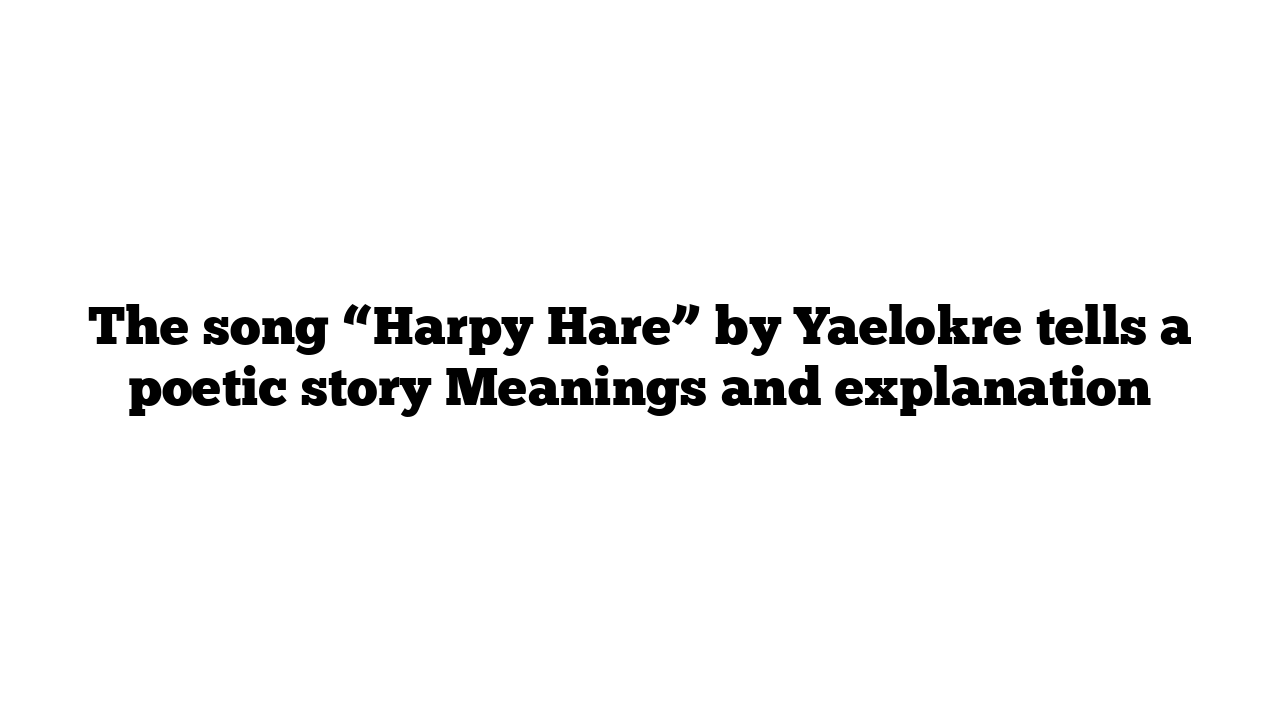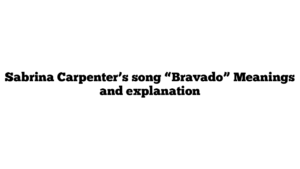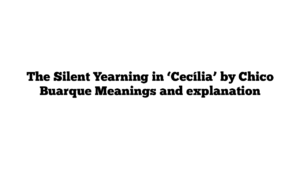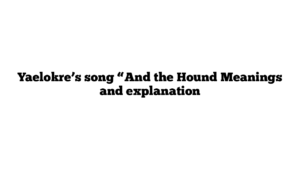The song “Harpy Hare” by Yaelokre tells a poetic story Meanings and explanation
The song “Harpy Hare” by Yaelokre tells a poetic story about protection, freedom, and the complexity of maternal relationships. The Harpy is portrayed as a loving but selfish mother who hides her heart and tries to shield her children from a dangerous world. However, this excessive protection turns into a prison, where the children, represented by broken arrows, struggle to escape and find their own freedom.
The Hare, who chooses not to retell the story, symbolizes a silent and patient observer. She watches the interactions between the Harpy and her children, sensing the pain and desire for freedom in their relationship. The repeated question, “Where have you buried all your children?” indicates an ongoing search for answers and understanding, both for the Hare and the Harpy’s children.
The Hound serves as the lyrical voice, acting as an active observer who tries to comprehend and intervene in this dynamic. He realizes that the Harpy’s protection, although well-intentioned, is stifling and unhelpful. The music, with metaphors of broken arrows and sterile curtains, illustrates a love that, in its effort to protect, ultimately causes harm. The final message urges the Harpy to let her children fly freely, emphasizing that true protection comes from freedom, not confinement.
Portuguese Version
A canção “Harpy Hare” de Yaelokre conta uma história poética sobre proteção, liberdade e a complexidade das relações maternas. A Harpy é retratada como uma mãe amorosa, mas egoísta, que esconde seu coração e tenta proteger seus filhos de um mundo perigoso. No entanto, essa proteção excessiva se transforma em uma prisão, onde as crianças, representadas por flechas quebradas, lutam para escapar e encontrar sua própria liberdade.
A Lebre, que opta por não recontar a história, simboliza uma observadora silenciosa e paciente. Ela observa as interações entre a Harpy e seus filhos, percebendo a dor e o desejo de liberdade nessa relação. A pergunta repetida, “Onde você enterrou todos os seus filhos?”, indica uma busca contínua por respostas e compreensão, tanto para a Lebre quanto para os filhos da Harpy.
O Cão serve como a voz lírica, atuando como um observador ativo que tenta compreender e, talvez, intervir nessa dinâmica. Ele percebe que a proteção da Harpy, embora bem-intencionada, é sufocante e contraproducente. A música, com metáforas de flechas quebradas e cortinas estéreis, ilustra um amor que, em sua tentativa de proteger, acaba causando dano. A mensagem final apela à Harpy para permitir que seus filhos voem livremente, enfatizando que a verdadeira proteção vem da liberdade, não da contenção.
spanish version
La canción “Harpy Hare” de Yaelokre cuenta una historia poética sobre la protección, la libertad y la complejidad de las relaciones maternas. La Harpy se retrata como una madre amorosa pero egoísta que esconde su corazón y trata de proteger a sus hijos de un mundo peligroso. Sin embargo, esta protección excesiva se convierte en una prisión, donde los niños, representados por flechas rotas, luchan por escapar y encontrar su propia libertad.
La Liebre, que elige no contar la historia, simboliza a una observadora silenciosa y paciente. Ella observa las interacciones entre la Harpy y sus hijos, percibiendo el dolor y el deseo de libertad en esta relación. La pregunta repetida, “¿Dónde has enterrado a todos tus hijos?”, indica una búsqueda continua de respuestas y comprensión, tanto para la Liebre como para los hijos de la Harpy.
El Perro actúa como la voz lírica, posicionándose como un observador activo que intenta comprender y, tal vez, intervenir en esta dinámica. Él se da cuenta de que la protección de la Harpy, aunque bien intencionada, es sofocante y contraproducente. La música, con metáforas de flechas rotas y cortinas estériles, ilustra un amor que, en su intento de proteger, termina causando daño. El mensaje final es un llamado a la Harpy para que permita que sus hijos vuelen libremente, enfatizando que la verdadera protección proviene de la libertad y no de la confinación.





